Why you can trust Tom's Hardware
Advanced Transient Response Tests
For details about our transient response testing, please click here.
In the real world, power supplies are always working with loads that change. It's of immense importance, then, for the PSU to keep its rails within the ATX specification's defined ranges. The smaller the deviations, the more stable your PC will be with less stress applied to its components.
We should note that the ATX spec requires capacitive loading during the transient rests, but in our methodology, we also choose to apply a worst case scenario with no additional capacitance on the rails.
Advanced Transient Response at 20% – 20ms
| Voltage | Before | After | Change | Pass/Fail |
| 12V | 12.096V | 11.945V | 1.25% | Pass |
| 5V | 5.042V | 4.941V | 2.00% | Pass |
| 3.3V | 3.332V | 3.175V | 4.71% | Pass |
| 5VSB | 5.084V | 5.029V | 1.08% | Pass |
Advanced Transient Response at 20% – 10ms
| Voltage | Before | After | Change | Pass/Fail |
| 12V | 12.097V | 11.947V | 1.23% | Pass |
| 5V | 5.042V | 4.941V | 2.00% | Pass |
| 3.3V | 3.332V | 3.175V | 4.72% | Pass |
| 5VSB | 5.084V | 5.036V | 0.94% | Pass |
Advanced Transient Response at 20% – 1ms
| Voltage | Before | After | Change | Pass/Fail |
| 12V | 12.097V | 11.957V | 1.16% | Pass |
| 5V | 5.042V | 4.942V | 1.98% | Pass |
| 3.3V | 3.331V | 3.173V | 4.74% | Pass |
| 5VSB | 5.084V | 5.038V | 0.90% | Pass |
Advanced Transient Response at 50% – 20ms
| Voltage | Before | After | Change | Pass/Fail |
| 12V | 12.097V | 11.949V | 1.23% | Pass |
| 5V | 5.039V | 4.939V | 1.98% | Pass |
| 3.3V | 3.330V | 3.167V | 4.89% | Pass |
| 5VSB | 5.049V | 4.995V | 1.06% | Pass |
Advanced Transient Response at 50% – 10ms
| Voltage | Before | After | Change | Pass/Fail |
| 12V | 12.098V | 11.952V | 1.21% | Pass |
| 5V | 5.039V | 4.940V | 1.96% | Pass |
| 3.3V | 3.330V | 3.168V | 4.88% | Pass |
| 5VSB | 5.049V | 4.998V | 1.02% | Pass |
Advanced Transient Response at 50% – 1ms
| Voltage | Before | After | Change | Pass/Fail |
| 12V | 12.098V | 11.962V | 1.13% | Pass |
| 5V | 5.040V | 4.941V | 1.97% | Pass |
| 3.3V | 3.330V | 3.164V | 4.98% | Pass |
| 5VSB | 5.049V | 5.000V | 0.98% | Pass |
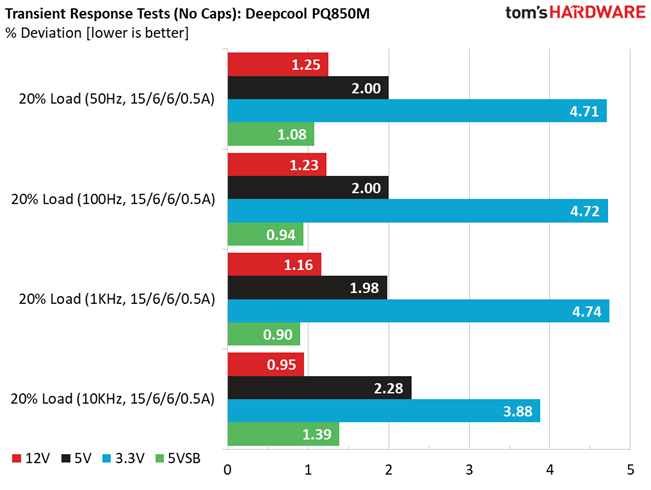
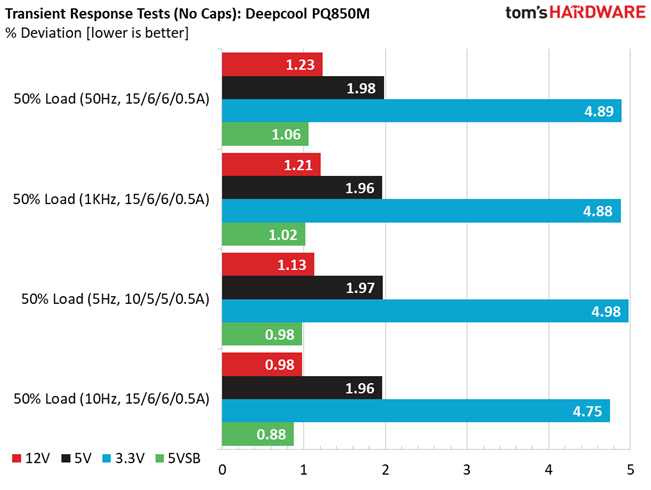
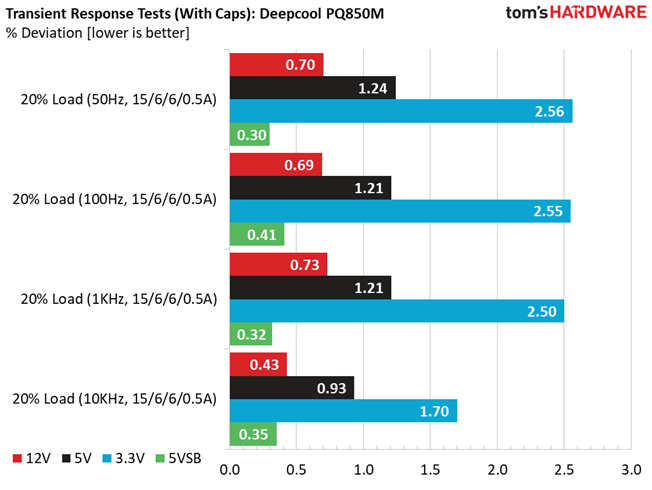
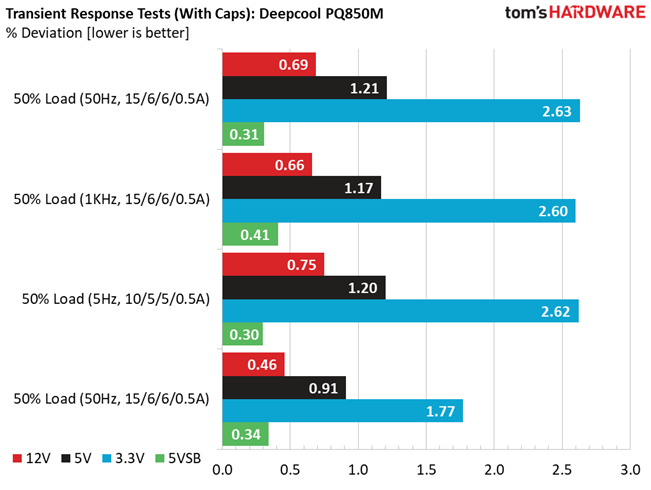
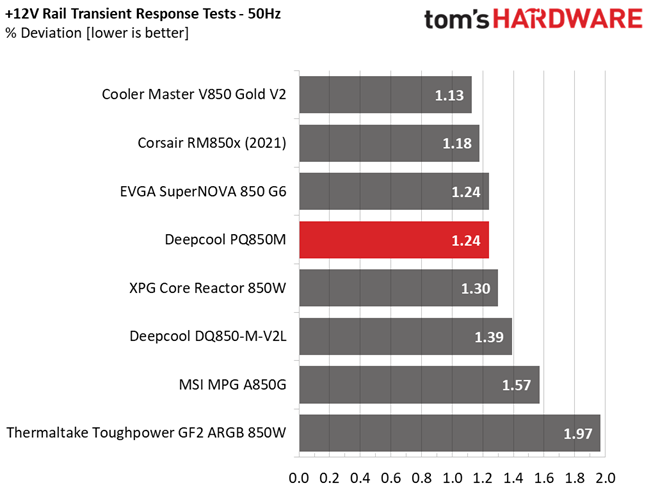

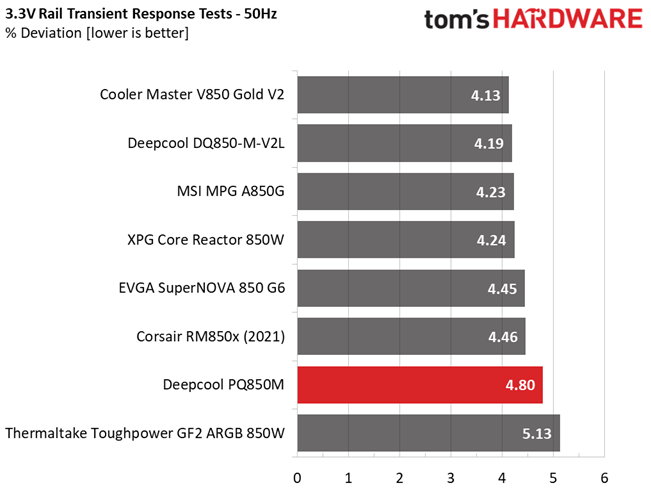
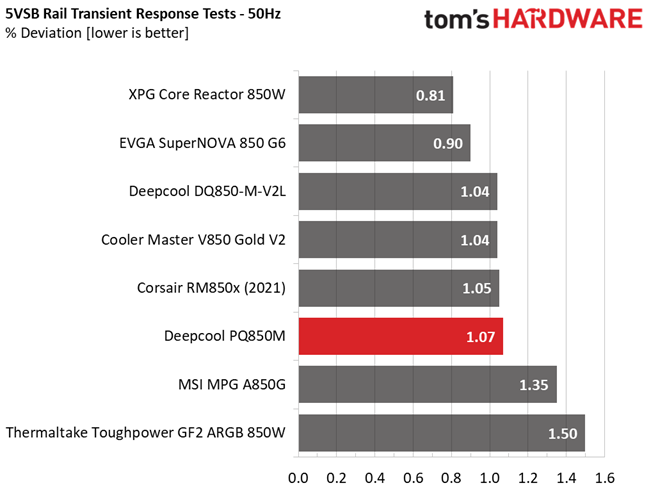
Transient response is good enough at 12V and 5VSB, decent at 5V and mediocre at 3.3V.
Turn-On Transient Tests
In the next set of tests, we measure the PSU's response in simpler transient load scenarios—during its power-on phase. Ideally, we don't want to see any voltage overshoots or spikes since those put a lot of stress on the DC-DC converters of installed components.


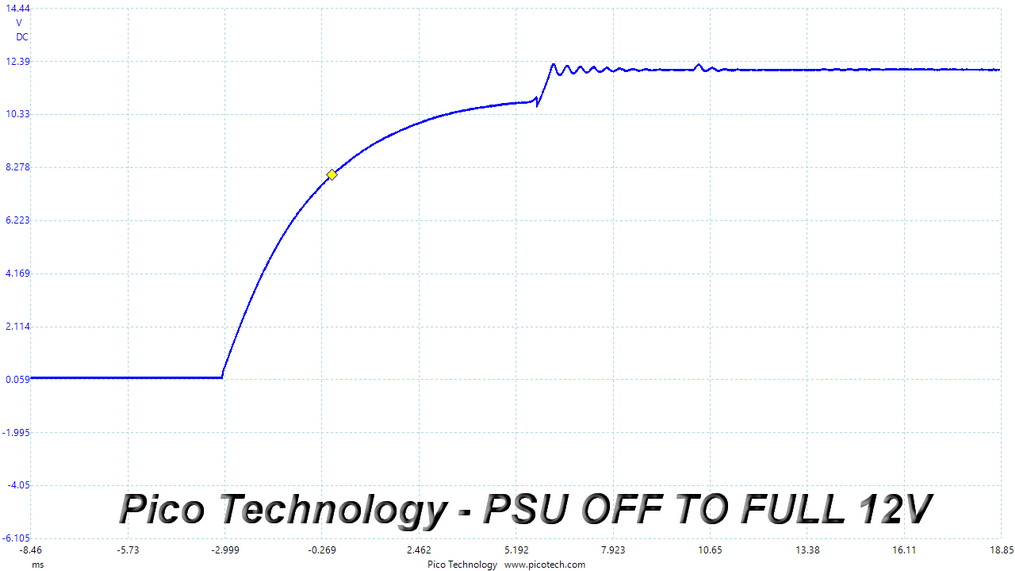
There is a tiny voltage overshoot at 5VSB, while at 12V, we meet the usual steps and some rigging in the last test, where we apply a full load immediately after switching on the PSU.
Power Supply Timing Tests
There are several signals generated by the power supply, which need to be within specified, by the ATX spec, ranges. If they are not, there can be compatibility issues with other system parts, especially mainboards. From year 2020, the PSU's Power-on time (T1) has to be lower than 150ms and the PWR_OK delay (T3) from 100 to 150ms, to be compatible with the Alternative Sleep Mode.
Get Tom's Hardware's best news and in-depth reviews, straight to your inbox.
| T1 (Power-on time) & T3 (PWR_OK delay) | ||
|---|---|---|
| Load | T1 | T3 |
| 20% | 90ms | 316ms |
| 100% | 94ms | 318ms |
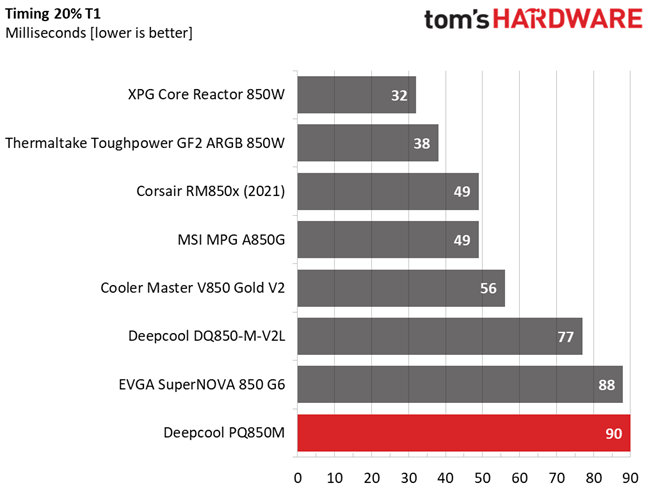
PSU Timing Charts
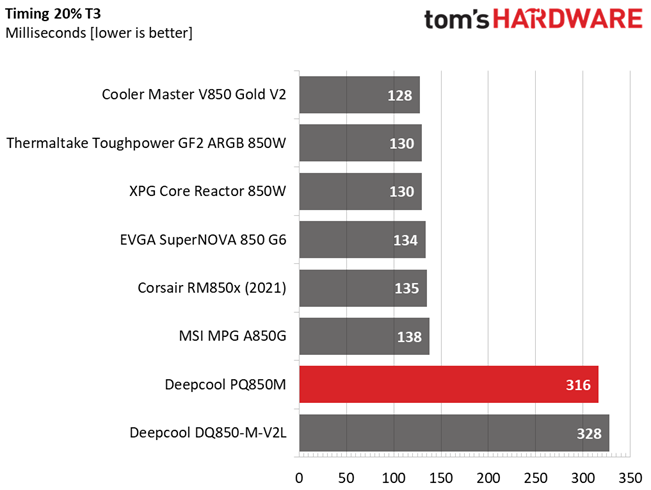
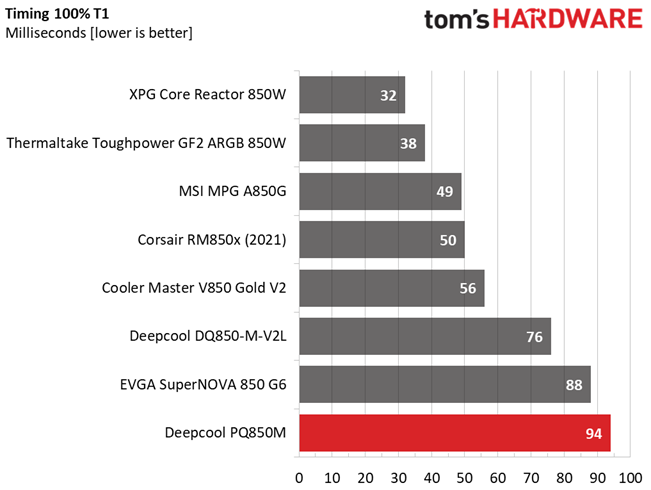
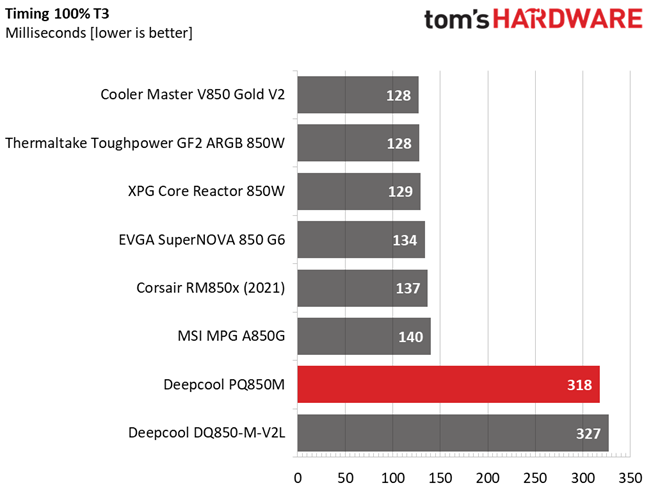
The PWR_OK delay is way above the 100-150ms region, so the PSU does not support the alternative sleep mode recommended by the ATX spec. The power-on time is below 100ms, at least, but it could be close to 50ms, to not create compatibility issues with "picky" mainboards.
Ripple Measurements
Ripple represents the AC fluctuations (periodic) and noise (random) found in the PSU's DC rails. This phenomenon significantly decreases the capacitors' lifespan because it causes them to run hotter. A 10-degree Celsius increase can cut into a cap's useful life by 50%. Ripple also plays an important role in overall system stability, especially when overclocking is involved.
The ripple limits, according to the ATX specification, are 120mV (+12V) and 50mV (5V, 3.3V, and 5VSB).
| Test | 12V | 5V | 3.3V | 5VSB | Pass/Fail |
| 10% Load | 11.8 mV | 11.9 mV | 14.4 mV | 5.8 mV | Pass |
| 20% Load | 13.9 mV | 13.7 mV | 16.5 mV | 6.1 mV | Pass |
| 30% Load | 15.5 mV | 12.5 mV | 16.1 mV | 6.4 mV | Pass |
| 40% Load | 15.6 mV | 12.4 mV | 16.4 mV | 6.8 mV | Pass |
| 50% Load | 16.2 mV | 13.3 mV | 15.8 mV | 6.7 mV | Pass |
| 60% Load | 16.8 mV | 13.3 mV | 16.6 mV | 7.7 mV | Pass |
| 70% Load | 18.4 mV | 13.0 mV | 16.6 mV | 6.8 mV | Pass |
| 80% Load | 18.9 mV | 14.4 mV | 17.2 mV | 8.0 mV | Pass |
| 90% Load | 21.4 mV | 15.2 mV | 18.3 mV | 9.6 mV | Pass |
| 100% Load | 33.7 mV | 16.3 mV | 20.1 mV | 11.2 mV | Pass |
| 110% Load | 37.5 mV | 18.4 mV | 21.7 mV | 10.6 mV | Pass |
| Crossload 1 | 18.6 mV | 14.6 mV | 17.6 mV | 6.5 mV | Pass |
| Crossload 2 | 14.2 mV | 14.7 mV | 15.8 mV | 6.0 mV | Pass |
| Crossload 3 | 11.9 mV | 11.6 mV | 14.7 mV | 5.5 mV | Pass |
| Crossload 4 | 33.3 mV | 13.1 mV | 16.7 mV | 8.2 mV | Pass |
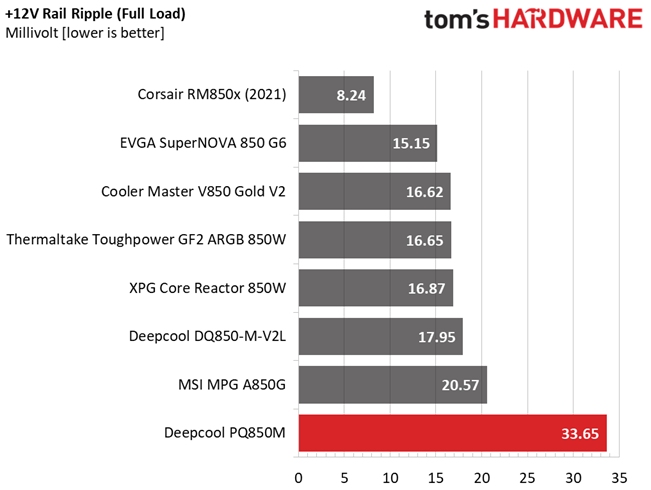
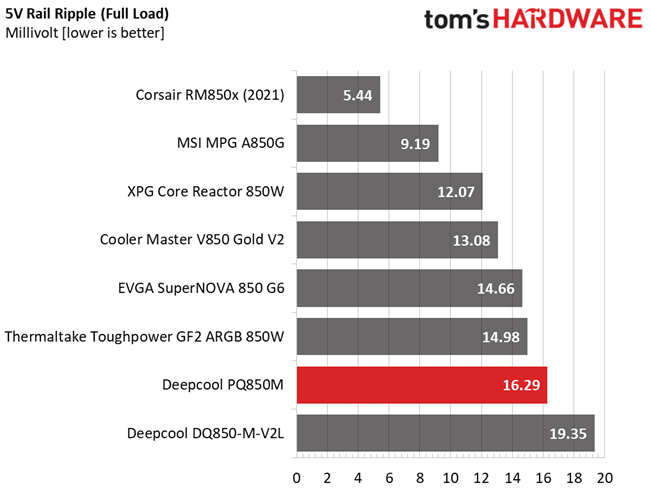
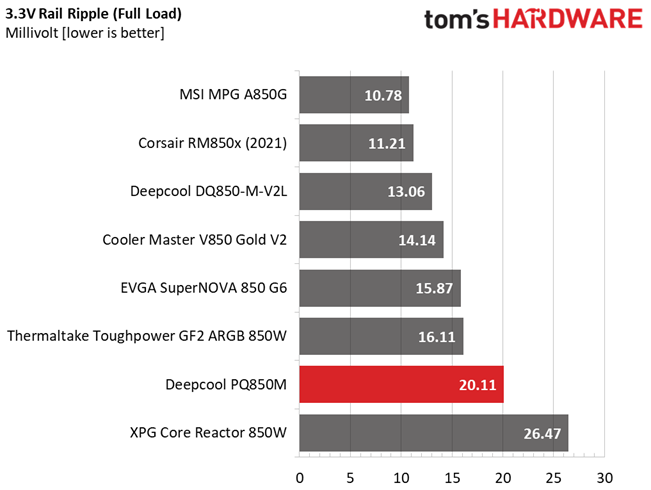
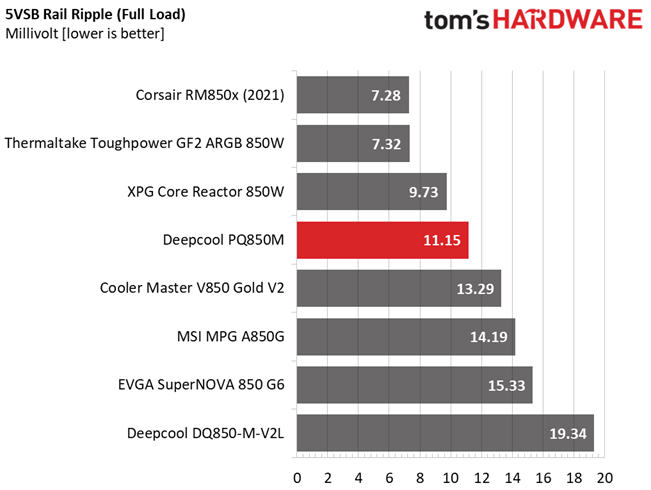
There is a significant increase in the 12V rail's ripple from 90% to full load, which doesn't look nice on the charts. Still, you cannot call ripple suppression bad since 33.7mV at 12V under sky-high operating temperatures is not that high.
Ripple At Full Load
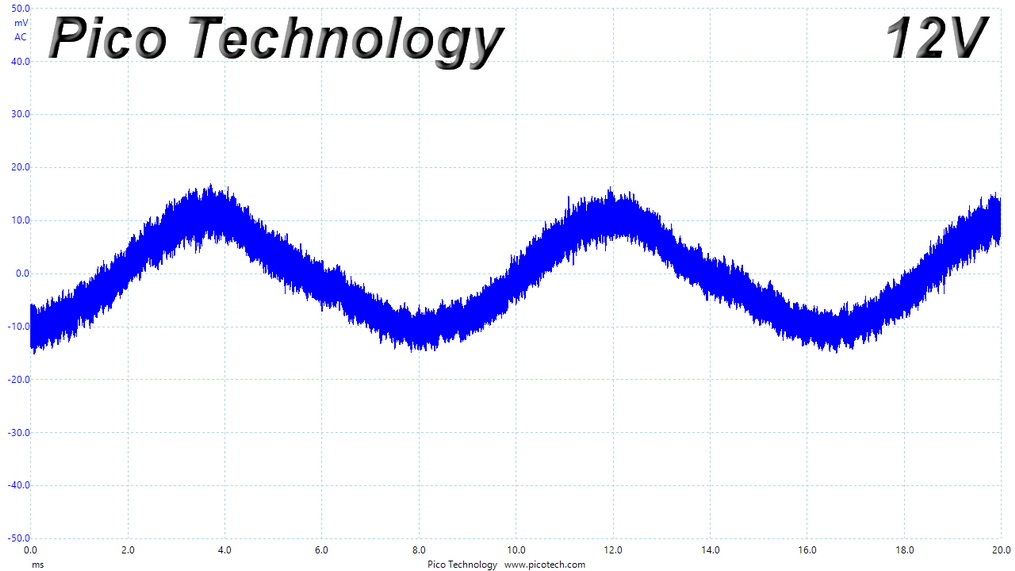
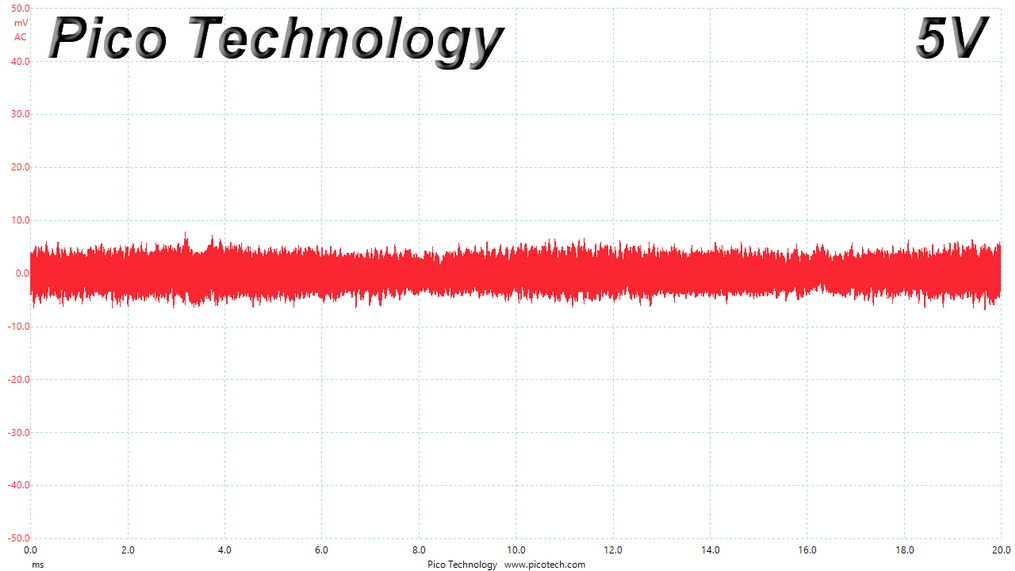
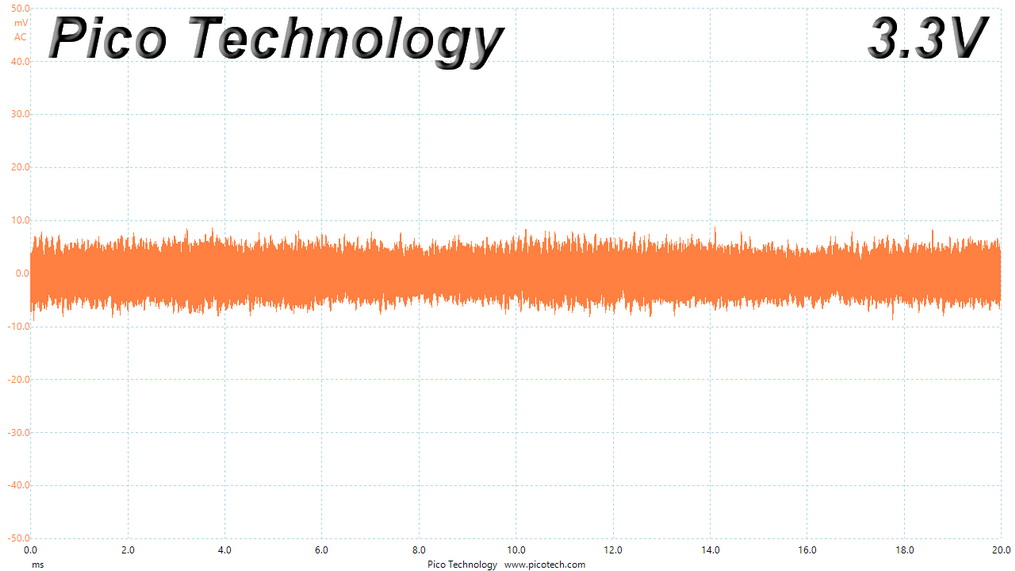
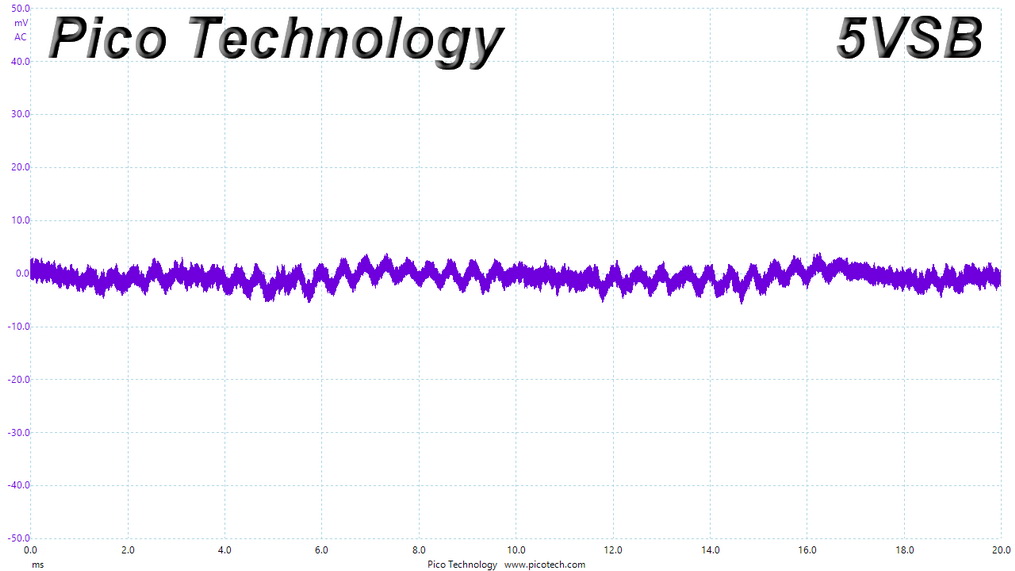
Ripple At 110% Load
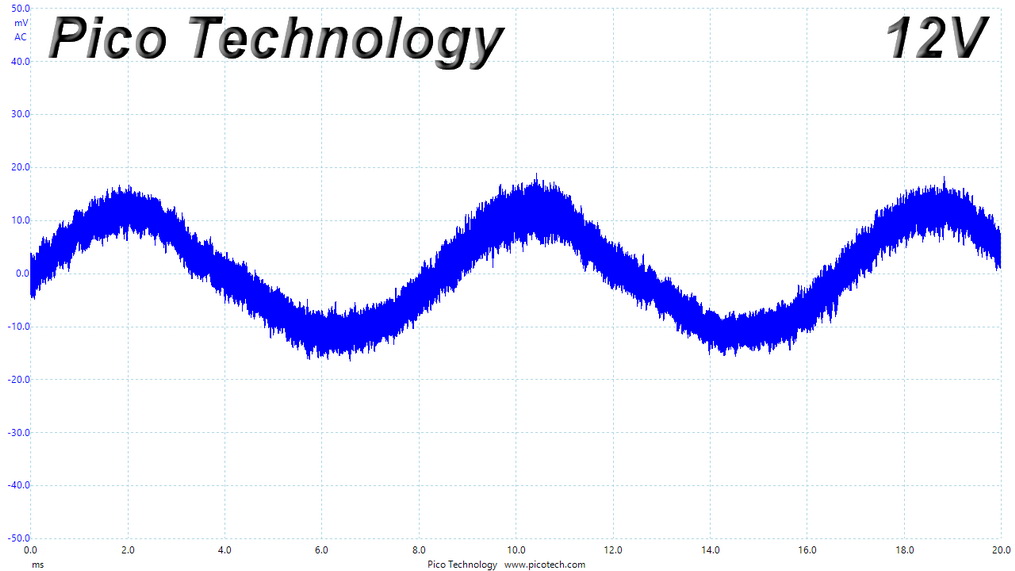
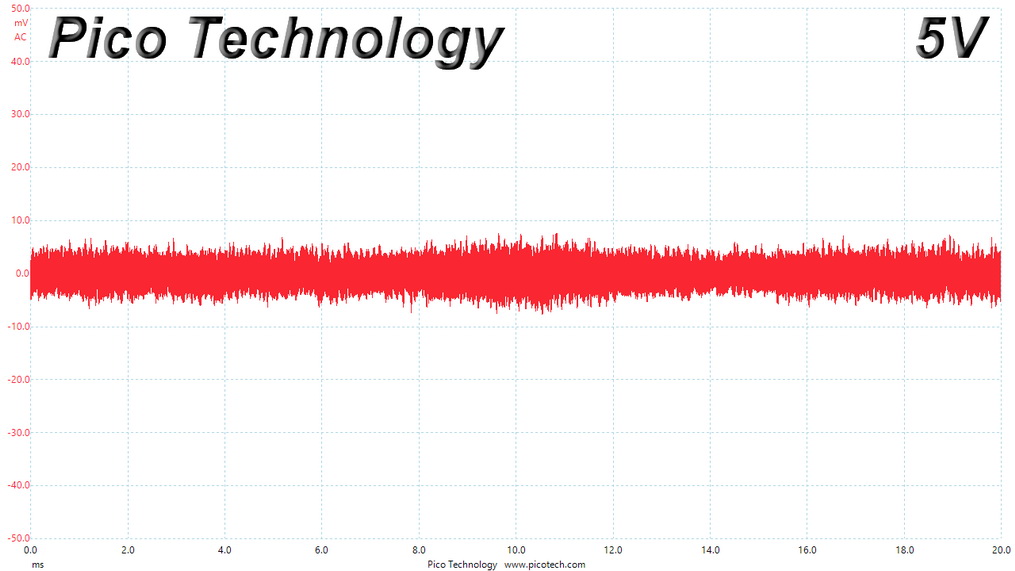
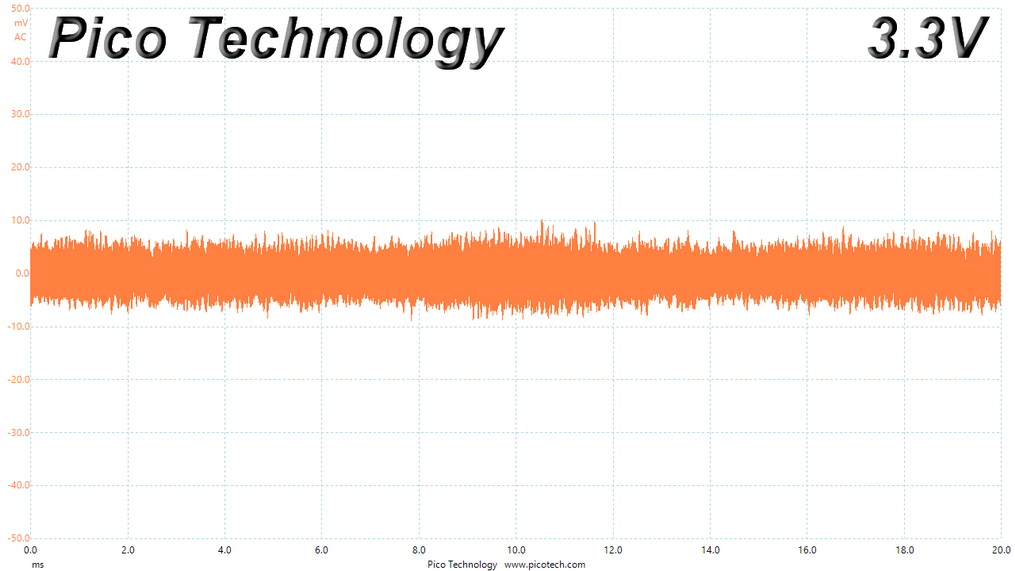
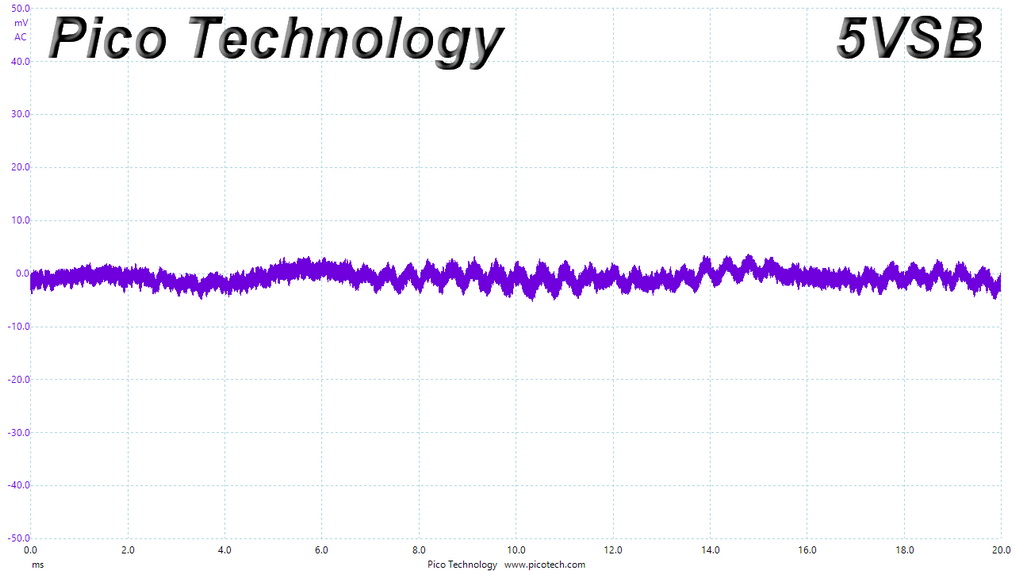
Ripple At Cross-Load 1
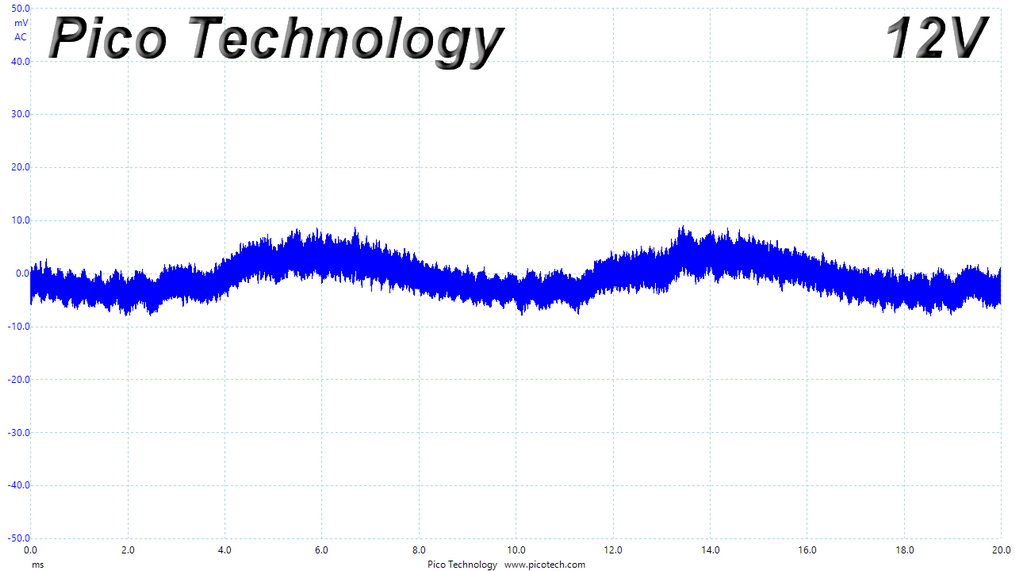
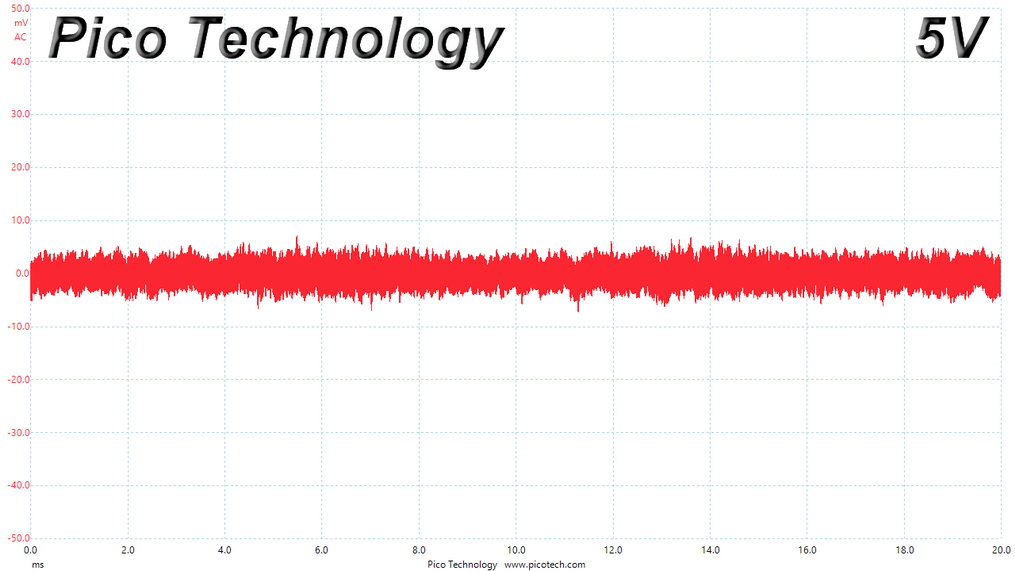
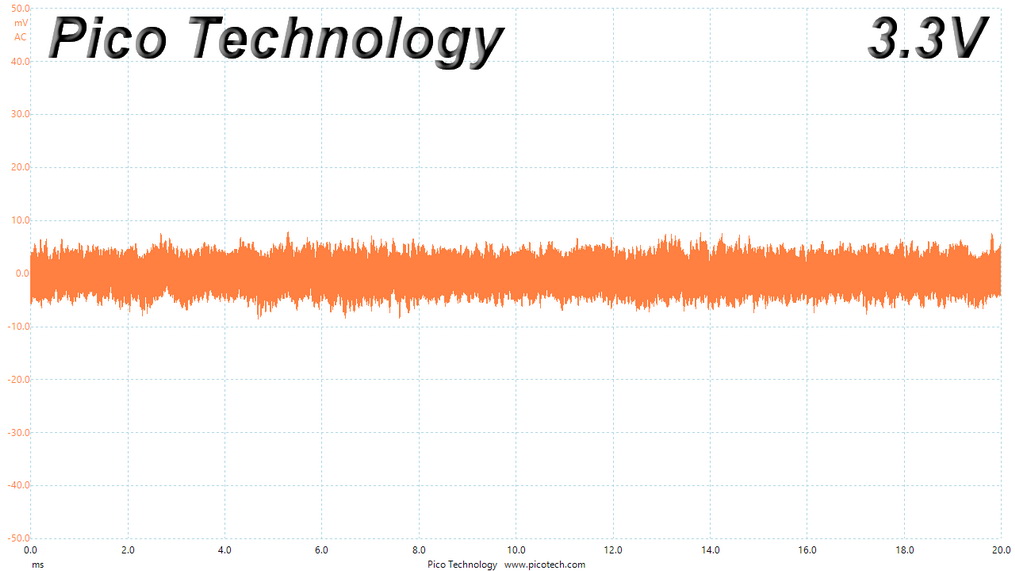
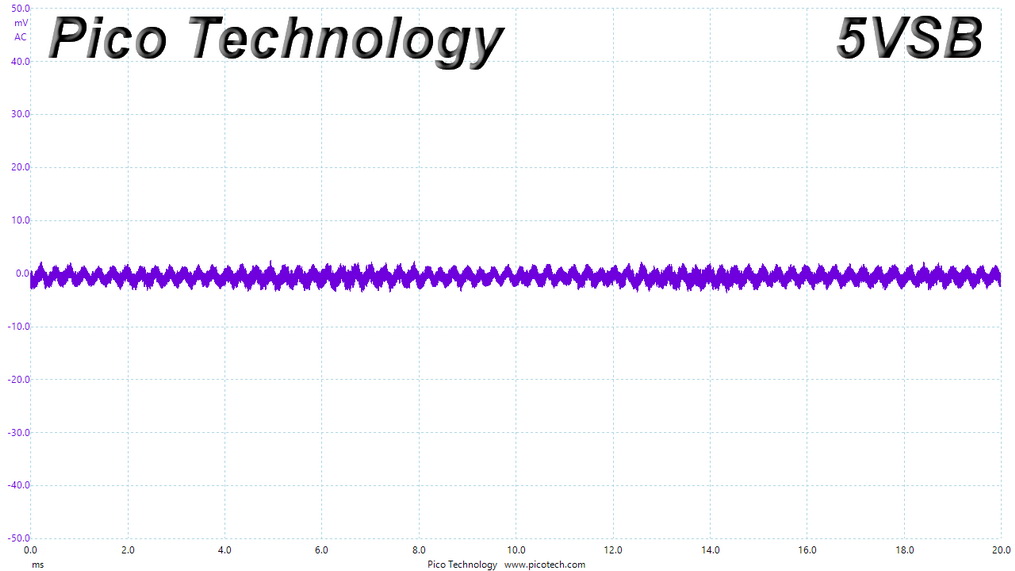
Ripple At Cross-Load 4
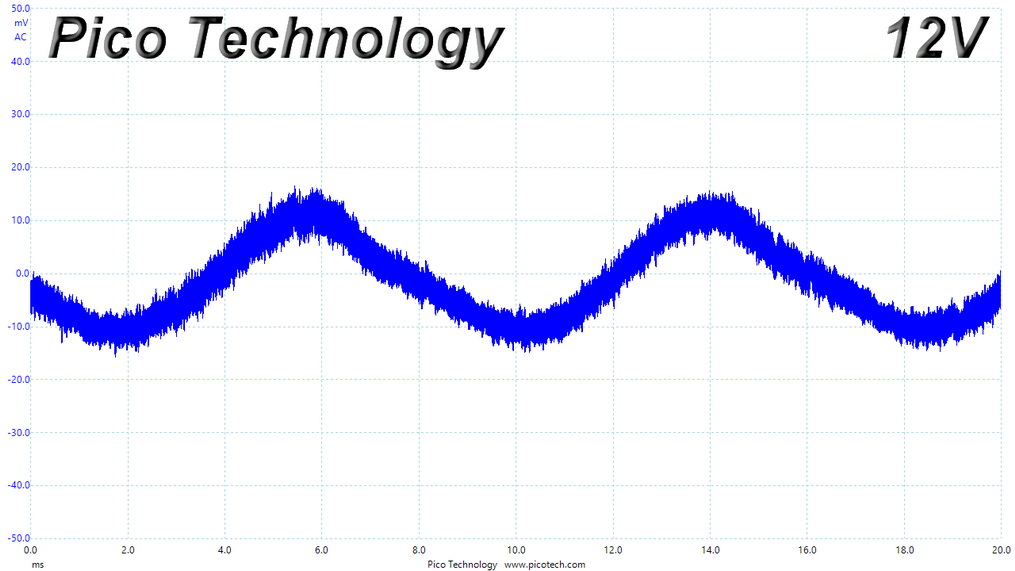
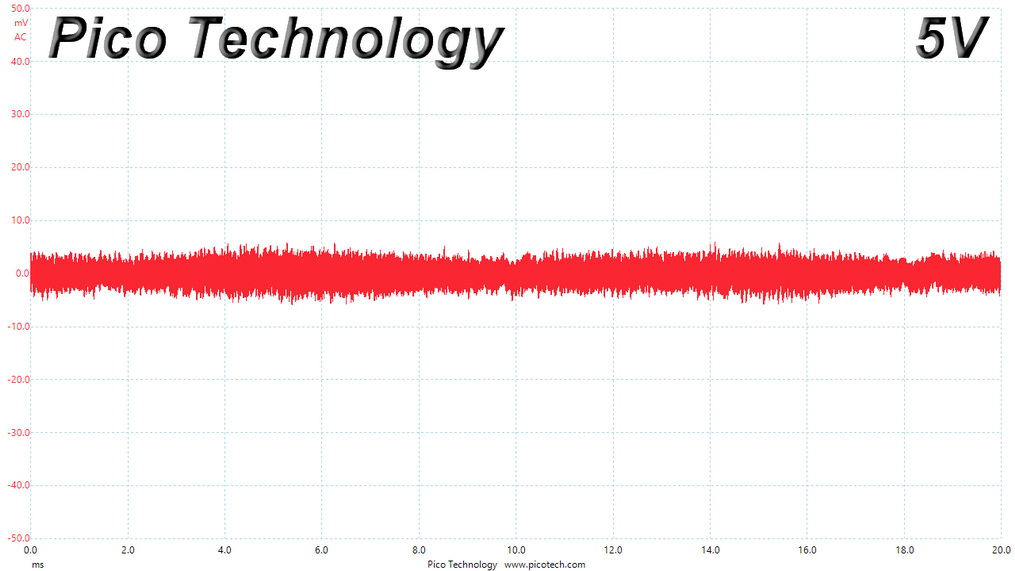
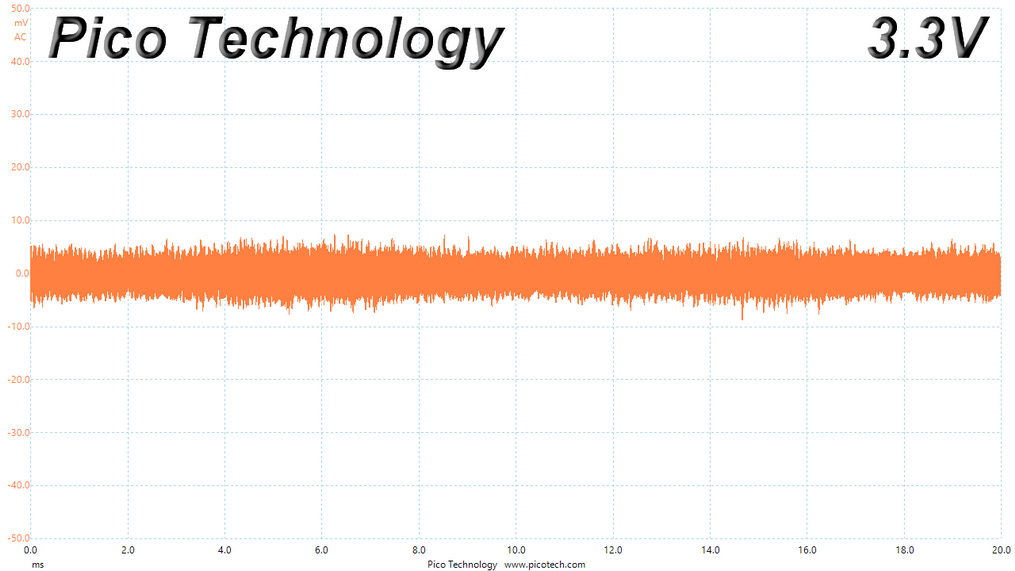
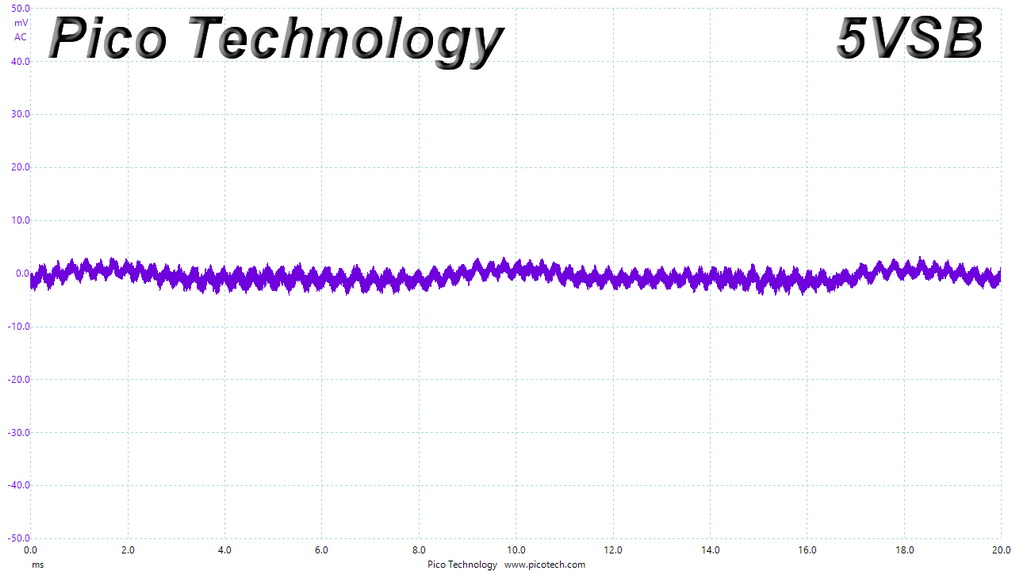
EMC Pre-Compliance Testing – Average & Quasi-Peak EMI Detector Results
Electromagnetic Compatibility (EMC) is the ability of a device to operate properly in its environment without disrupting the proper operation of other nearby devices.
Electromagnetic Interference (EMI) stands for the electromagnetic energy a device emits, and it can cause problems in other nearby devices if too high. For example, it can cause increased static noise in your headphones or/and speakers.
΅We use TekBox's EMCview to conduct our EMC pre-compliance testing.
Conducted EMI emissions are low.
MORE: Best Power Supplies
MORE: How We Test Power Supplies
MORE: All Power Supply Content
Current page: Transient Response Tests, Timing Tests, Ripple Measurements and EMC Pre-Compliance Testing
Prev Page Protection Features, DC Power Sequencing, Cross-Load Tests and Infrared Images Next Page Performance, Noise, Efficiency and Power Factor
Aris Mpitziopoulos is a contributing editor at Tom's Hardware, covering PSUs.
-
Co BIY This category seems to show all the competitors neck-and-neck. Are they all using the SeaSonic Gold Platform ?Reply
I don't mind the grid pattern and perhaps it's excellent airflow allowed for less fan.
I think it looks particularly sharp on the back. -
drajitsh It is not ideal to buy a PSU right now because we are in a transition phase from the previous ATX spec to the new one. I am likely going to be forced to buy 2 systems for my office. They will have integrated graphics to start with and will be upgraded to low end discrete graphics in 1-2 years. Does your recommendation still stand?Reply -
Co BIY Replydrajitsh said:It is not ideal to buy a PSU right now because we are in a transition phase from the previous ATX spec to the new one. I am likely going to be forced to buy 2 systems for my office. They will have integrated graphics to start with and will be upgraded to low end discrete graphics in 1-2 years. Does your recommendation still stand?
I don't think low end cards will be requiring the new connectors in the short term. This is a necessity only for the high end cards with crazy peak power draws.
The makers of the low end cards will also build them to match the likely customer , you and the other 500 million people running machines without the ATX3.0 PSU upgrades.
Question: Why are PSU's built with fan grills ? None of the other fans in PCs have grills and PSU fans aren't bigger or faster . Also readily replaceable fans could be a great selling point because users want to mod. -
Co BIY ReplyTom Sunday said:The old story...eveyone wants a piece of the pie! Deepcool once dedicated exclusively for PC cooling now into PSU's as well. Next we have Seasonic making memory. I wish that companies would perfect their originally intended product line and giving us those results, instead of just plastering their nane on products made by others. I have no respect for this as it is a quick fix to make more money and even having some people believe that they have a better product when this is absolutely not the case .
I agree with you if they just slap their "Premium" name and a few RGB's to something of below average quality and then throw it out there at a Premium price.
In this case they started with a very solid platform, executed it competently and it delivers the goods quietly.
This PSU doesn't seem like it's worth getting the pitchforks out for. -
Co BIY ReplyTom Sunday said:Yes you are on the point as always!
Thank You for the compliment!
Tom Sunday said:My other 'Deepcool' thought and great hope was that someday perhaps air-cooling products will equal the thermal performance of AIO’s. In part many users even with extensive experience sometimes have trouble installing AIO’s into their case.
I agree with you that the simplicity, reliability and cost advantages of air cooling justify continued development. Lenovo has an interesting offset stacked air cooler design on their new Threadripper workstations that I would like to see make it to the DIY market .
Lenovo Thinkstation P620 Review (at Anandtech)
